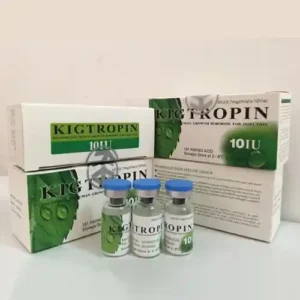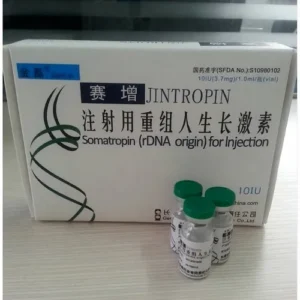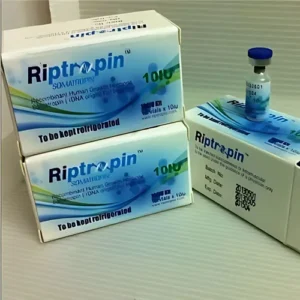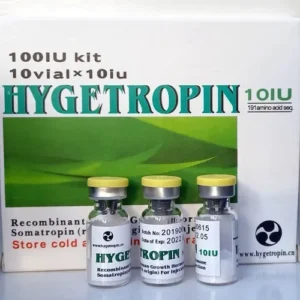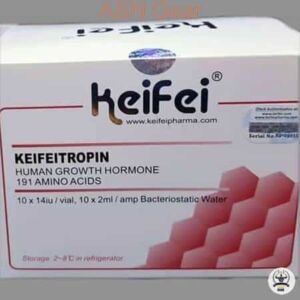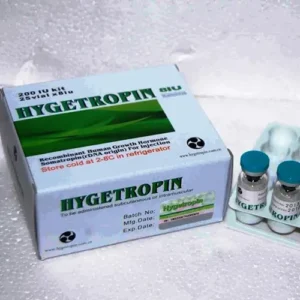
Growth Hormone | HGH
Reading time 10 min 44 sec
Growth hormone. The hormone around which is many rumors, the hormone around which bodybuilders, athletes, doctors run around. Accordingly, with an eye on this hormone, we have the necessary rules for diet, why we eat this way, and not otherwise, why we don’t close the carbohydrate window with sweets, it’s just connected with growth hormone and more, and more…
What is this? What is it going with? What does it affect? What is his relationship with insulin? Let’s talk about this briefly.
So growth hormone, a somatropin hormone that is secreted by the frontal part of the pituitary gland, like many other hormones. Very interesting things begin.
Firstly, it is a peptide hormone. That is, it has a protein structure, it is not a cholesterol breed, such as testosterone. And there are a lot of rumors that this hormone can burn fat, that this hormone calmly builds muscle mass, but there are certain subtleties.
Like any hormone, somatotropic hormone has target tissues, where receptors sensitive to this hormone are located. First, we will consider the growth hormone and the process of fat burning. Growth hormone has a lot of effects.
Some of HGH Effects:
- Fat burning;
- Anabolic effect;
- Promotes fast healing of wounds;
- Promotes healing of injuries of the musculoskeletal system, ligamentous, cartilage tissues.
The fat burning effect is of interest to everyone first of all. And the remaining effects are mediated through mediators.
Take the human lepocyte cell. On the surface of the lepocyte cell, there are alpha receptors and beta. And if the beta receptor is activated, then starts the process of lipolysis. That is, an adipose cell gives triglycerides to the blood, or rather, the reserves that are stored in the form of triglycerides. If the alpha receptor is activated, then there is lipogenesis – storage. We will have to delve deeper into these processes to understand how somatotropin works. And it works as follows.
Let’s imagine we have 2 beta-receptors (our favorite receptors) and have alpha receptors. In fact, inside the lepocyte, inside the cell, there is an enzyme, which is engaged in the fact that one breaks down, and the other forms supply of triglyceride. Correspondingly, the hormone-sensitive lipase is responsible for lipolysis. And for the accumulation of lipoprotein lipase. So, a signal from the surface specifically for the activation of this enzyme so that it becomes active is transmitted precisely through these alpha and beta receptors. Accordingly, if you activate the beta receptor. Further, the signal goes using the signaling scheme through cyclic adenosine monophosphate, after which it does its job and the fat cell shares its reserves. However, the passage of this signal is ultimately blocked by phosphodiesterase. There is an enzyme that blocks it. So, just HGH blocks the action of phosphodiesterase and prolongs, that is, increases the ability of the beta receptor to transmit a signal for activation of this sensitive lipase hormone over time.
What does this tricky scheme mean to us?
We activate beta-receptors catecholamines in the first place (adrenaline, noradrenaline, stress hormones). They cling to beta receptors and transmit an activation signal through cyclic adenosine monophosphate and, accordingly, the cell shares its reserve. Growth hormone here is not directly, but indirectly by the fact that it blocks phosphodiesterase, which in turn is blocked by the transmission of this signal, thereby helping the action of catecholamines.
And what does this mean?
And this means that if everything is okay with growth hormone, but if we do not experience stress from the diet, from a calorie deficit, we do not have adrenaline, noradrenaline which appears as a reaction to stress, as a reaction to a lack of calories to get from stocks of this energy. Yes? Nothing will happen. That is, there is growth hormone, but we do not observe a deficiency of calorie intake, we eat as much as we eat, respectively, growth hormone in our body is blocked by phosphodiesterase, beta receptors are waiting for us, they are activated, the signal is ready to pass, but no one is signaling. There is no adrenaline, noradrenaline, no stress, no-calorie deficit and you are not losing weight! And so in this way, this is our first part, growth hormone directly, by itself, as it is, acts on fat burning.
The second part is the same as the effect of testosterone and other counterparties on fat burning. This is an increase in beta-receptor density. We all have problem areas that are the worst to dry out. Someone from the sides, someone lower abdomen. Why is this happening? To a greater extent because our composition of adipose tissue is heterogeneous. In those places where our fat leaves the worst, we first have less capillary supply. And adipose tissue itself has a structure such that they have more alpha receptors, fewer beta receptors. And accordingly, while we have, since the affinity of catecholamine alpha receptors is higher, until all alpha receptors are occupied with us until such a concentration occurs until the beta receptor is activated. Since beta receptors are less precisely in those problem areas, that is why they are problematic. So, Somatotropin, as well as androgens, increases the density of beta receptors on the surface of lepocyte. And our problem areas, if we monitor the level of growth hormone, begin to go away, but with a diet (if we eat properly with a deficiency of caloric intake)!
What do you think is stopping us from burning fat?
First of all, this is, of course, the hormone insulin. The growth hormone is an insulin antagonist. Because insulin is a very powerful lipoprotein lipase activator, that stores fat and vice versa, insulin inactivates the hormone-sensitive lipase. This means that if we have insulin, no one of the actions of our growth hormone appears as fat burning. This is a very important point.
Well, and accordingly, who is our second enemy, let’s remember. Who increases over time the density of alpha receptors because of what the figure begins to become like a female?
Second part.
Anabolic part of growth hormone.
This is the case with the anabolic part. Direct muscle growth hormone practically does not grow. The growth hormone grows muscle indirectly. We have a liver organ in which there are sensitive receptors for growth hormone. And when in our body somatotropic hormone enters the liver, somatomedin is secreted under its influence.
So what is it?
Somat – growth, medina from the word mediator, that is, a mediator. Previously, they were called somatomedins (A, C). And now they are better called insulin-like growth factors (IGF). It happens IGF-1, IGF-2. But we are primarily interested in IGF-1 because IGF-2 acts on children. We are adults, therefore, we will consider insulin-like growth factor 1. So it is he who deals with why he is called insulin-like, we have the most important, most powerful anabolic hormone, insulin. And it is this insulin-like growth factor that grows muscles. And here it is just with insulin that he has a completely different relationship than with pure somatotropic hormone, which burns fat in our body. Because without the presence of insulin, when they say to me, “Here growth hormone does not work without insulin.” Right! It does not work like a hormone that builds muscle. Because IGF-1 builds our muscles. But he doesn’t work without insulin! That is why it is verified very simply. The biggest problem is that in children with diabetes, one (lack of development). It would seem that the growth hormone is in order, which the muscles do not grow. But no. With growth hormone, they are all right. However, what is diabetes alone? One diabetes is when we don’t have insulin. He is not there. The pancreas does not secrete insulin. To us, the tissues are susceptible to it, but it is not there. It must be teased constantly. This is the so-called insulin-dependent type of diabetes. So, in such children, despite the presence of normal levels of growth hormone and, accordingly, IGF-1, this is a developmental deficiency. Until they begin to inject insulin in sufficient doses, this development does not occur. Why? Because IGF-1 without insulin does not work. And from here the tricky question begs. How so?
There is such a concept as IGF-1, it grows with us as an insulin-like growth factor and fat and muscles like insulin. The growth hormone itself can burn fat for us. It turns out either one or the other. Either with insulin or without. Where is this middle ground? That’s right, everything is medicine, everything is poison, the question is dosage. Same thing with insulin. When we have a lack of insulin, it will be good to burn fat, but at the same time build muscle and burn fat, we will not succeed. Accordingly, if we have a lot of insulin, we will grow, but fat burning will also fail. At the same time, burning fat and directly building muscle mass if you do not use various kinds of exogenous preparations of the same growth hormone does not work, because either one or the other. Otherwise, it will create a bias. And even if you will, although I do not advise doing it myself. Only under the supervision of doctors, everything must be done very competently. It is this balance of insulin so that it is not much and not enough. So that he goes both to fat burning and to gaining muscle mass, carefully and slowly, this must be carefully monitored, because the task is not simple.
So what else can I add about growth hormone and IGF-1?
I specifically do not touch on the direct effect of growth hormone on the growth of the length of the tubular bones because this applies only to children. This is a matter of growth and in an adult, it is already a closed zone.
Growth hormone effects:
- Wound healing;
- Ligament Repair;
- Recovery after injuries of the musculoskeletal system.
Next, consider how growth hormone is secreted.
Growth hormone is a stress hormone. As you already understood, he is a contra-hormonal hormone. Why? Because it raises blood sugar. It directly works against insulin. The insulin-like growth factor is funny, it’s insulin-like, and somatotropin itself, by its effect on glucose utilization, is contrinsular, that is, it increases the level of glucose. That is, in the muscles, the somatotropic hormone helps the muscles work on fatty acids, to a lesser extent utilize glucose. It accordingly raises the level of glucose in the liver. As a result, let’s say again, if someone uses exogenous injections of this very somatotropic hormone (we do not recommend doing this yourself), then you need to look carefully. If, for example, after an injection, you measure sugar in yourself, then you will find that the sugar level rises. Why? Because growth hormone is a contra-hormonal hormone, accordingly, insulin immediately after it will tighten, which will need to do this somewhere. So what is important to us in this matter? It is important that bursts of the somatotropic hormone do not coincide with bursts of insulin otherwise we will have no use. Why it happens? For one simple reason. That is why we do not close the carbohydrate window with something sweet as was customary before.
The secretion of growth hormone is:
- Cyclical in time;
- It is contra-insulin, it is a stress hormone.
This means that it is secreted:
- When we are hungry;
- When we have heavy physical activity;
- Or when we sleep. That is when we have no food.
That is why we have the highest level of growth hormone at night secretion. And the rest of the time, it goes with bursts in our body (while tracking them is almost impossible). And as always, we have the most painful surge of growth hormone in our body when we have heavy anaerobic exercise. And if we eat something sweet right after this load, we will nullify the action of the hormone somatotropin deficient for us by the action of insulin. That is, he will not burn fat with us, besides the fact that he raised the blood sugar level as a contra-insulin hormone, we also added sweet ones to insulin soar to heaven. This is completely unnecessary. IGF1 will work calmly with us and on the insulin that we have, which is always present in the blood anyway.
We reviewed the cyclic nature. About the negative feedback loop is the same as with androgenic and the like, we also talked since this is our pituitary hormone.
What lowers the level of growth hormone in our body?
First of all, IGF-1. The higher it is, the higher we have somatostatins, that is, they press, the less it is, the higher it is. The thyroid gland works in approximately the same way, the secretion of testosterone works in the same way, in the same way only through gonadotropic hormones, there is also gonadoliberin, gonadotropic luteinizing, follicle-stimulating which act on the testicles, on the Leidig cells and Sertoli. The same thing here. And besides everything else, there is such a theory that insulin lowers the secretion of directly somatotropic hormone in a very cunning way. It lowers the sensitivity of the pituitary gland to somatoliberin. That is, somatoliberin is produced, and directly because the sensitivity of the pituitary receptors by insulin is suppressed, the somatotropic hormone is produced less. There is also such a theory. This is also from the area of why it is not worth consuming an excessive amount of foods that increase sugar levels and subsequently increase insulin levels.
I touched only 10 percent – 15 percent of all aspects of the action of growth hormone. I’d just like you to understand what kind of animal it is, what it is eaten with, why there are such rumors, someone says that it doesn’t work without insulin, someone says that on the contrary, insulin is not needed, so that you understand what the fat cell and growth are it acts directly on tubular tissue, and the rest of the action indirectly through somatomedin and an insulin-like growth factor, which is secreted to us by the liver in response to the actions of growth hormone. So that you all perfectly understand.
Brief Summary
Somatotropin is a pituitary hormone that affects directly the growth of tubular bones in length. That we as adults are of little interest.
Affects muscle utilization of glucose. It puts the muscles in the mode of operation on fatty acids to a lesser extent on the utilization of glucose, in addition to all leads to an increase in blood sugar.
And it directly affects adipose tissue.
It increases the density of beta receptors, which are responsible for fat burning.
It prolongs the action of cyclic adenosine monophosphate as signal lines from beta receptors to the hormone of sensitive lipase, which, when activated by catecholamines, is engaged in precisely what causes the cell to share its reserves. Accordingly, if we have growth hormone, but do not have catecholamines, we do not experience calorie deficiency, we do not have adrenaline, noradrenaline, lipolysis because of this, even if it doesn’t come from anywhere.
All other actions important to us are mediated through an insulin-like growth factor, not directly through growth hormone. It is called insulin-like because its actions are similar to the actions of insulin. IGF-1 can build muscle and fat too. And we need to know what exactly IGF-1 does not work without enough insulin. This does not mean that we need to eat sweets, the insulin that is always contained in our blood is quite enough. It is simply enhanced by the action of an insulin-like growth factor.
What else is important to know?
It is important to know that the secretion of this growth hormone depends on a person’s age. It’s one thing when a small child or teenager. That is, he has a maximum level of growth hormone. Another thing is an adult over 30. Who has this hormone in great deficiency. That is, it is almost gone.

